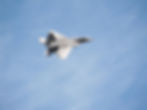The Future of Aerospace & Defense: Trends & Predictions for 2025
- jennyminney
- Feb 18
- 3 min read
As we look towards the future, the aerospace and defense industry is poised for significant transformation. With 2025 upon us, companies in this sector must stay ahead of the curve by understanding the emerging trends and predictions that will shape their strategies and operations. From advancements in technology to shifting geopolitical landscapes, the next few years promise to bring both challenges and opportunities. In this post, we will explore the key trends and insights that aerospace and defense firms should anticipate, ensuring they are well-prepared to navigate the evolving landscape of their industry.

Defense Spending Shifting to Europe
The initial forecast suggests a shift in defense spending from the US to Europe. Due to ongoing conflicts in Europe and the Middle East, along with changes in the US government, we anticipate a clear shift of defense expenditure towards Europe this year. Simply put, discretionary or project-based spending at defense agencies is expected to rise in Europe while remaining stable or potentially declining in the US. Concurrently, new perspectives in the government, particularly in DOGE, will accelerate the transition of larger defense and space agency spending from cost-plus/cost-reimbursable to fixed-price and outcome-based contracts.
What implications does this have for A&D firms in the US and Europe? Firstly, there will be an increase in mergers, especially between these two regions. Whether it's US companies expanding their European presence or European A&D firms leveraging new prime contracts to acquire smaller US A&D firms, merger activity will rise from the relatively low levels observed in the past couple of years since the pandemic. Secondly, the growing trend towards fixed-fee and outcome-based contracts, even for early-stage programs and R&D initiatives, will place a greater emphasis on precise cost and risk prediction in proposal responses. This, in turn, challenges A&D firms and their software tools, like Twenty5, to more accurately forecast the cost and risk of highly complex fixed-price programs.
Adoption of AI
The second prediction we observe is the adoption of AI in the MRO sector, or aftermarket maintenance of long-lifetime products in A&D. MRO or aftermarket has consistently served as the profit engine in commercial A&D, with large manufacturers sometimes selling engines at a loss to recoup costs through maintenance over a 25-year product lifespan. We highlight MRO because it is the most promising area for AI adoption by A&D firms. MRO is inherently more complex, less repetitive, and more dependent on human factors than initial production, particularly once steady-state production rates are achieved. Concurrently, the workforce is aging, and the need to capture their knowledge through smart AI-based tools and systems is creating an ideal situation with the maturation and acceptance of AI by typically cautious, regulated firms, such as those in A&D.
Increase in Commercial Activity
The third forecast we observe this year is a general increase in commercial activity. Passenger flight miles are on the rise, and global health and disease control agencies are now sufficiently advanced, making another SARS outbreak unlikely. Aircraft will remain full, and airlines will invest in both new assets (planes) and innovative technologies or systems. Simultaneously, there is growing competition in the commercial satellite sector, particularly in internet broadband and satellite phone services, with consolidation occurring among major players like Starlink, HughesNet, and Viasat, as well as new entrants such as Echostar and Project Kuiper. There will be a strong emphasis on satellite development, products, and launches throughout this year.
In conclusion, 2025 can expect to see the notable shift in defense spending towards Europe, reflecting the evolving geopolitical landscape. Additionally, the widespread adoption and acceptance of artificial intelligence within aerospace and defense firms is anticipated to drive innovation and efficiency. Furthermore, we expect to see significant improvements in the commercial aviation sector, enhancing both safety and customer experience. These trends collectively indicate a dynamic future for the industry, marked by adaptation and growth.
Follow Twenty5 on LinkedIn for more updates, content & news!
